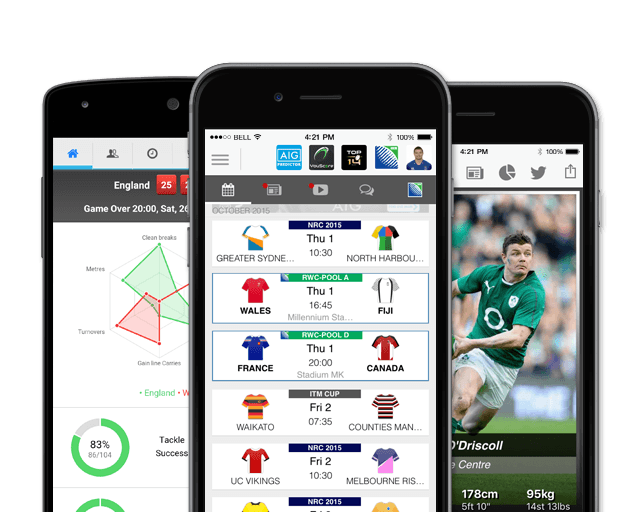Connacht's approach to game management could decide Pro12 Final
- 2575

Connacht's approach to game management could decide Pro12 Final
Ahead of the PRO12 final, our guest blogger The Chase takes a look in detail on how Connacht's game management can cap a fairytale season.
Connacht's success in the 2015/16 Pro12 has come on the back of a gameplan which puts faith in their attacking system and excellent handling skills. This has been clear in the way they have scored their tries throughout the year, but perhaps overlooked is its importance in the way they attempt to manage a lead in close games.
Accurate, controlled kicking from hand has been an important aspect of their run to the final over the last few weeks, but head coach Pat Lam has been vocal in his desire to avoid overreliance on the kicking game as a tactical tool. The ability to keep the ball for sustained periods of pressure is a vital skill when leading late in the game, and Connacht are able to do this extremely well because of the high level of basic skills Lam has instilled throughout the squad - as well as the clinical nature of their attack when try-scoring opportunities do present themselves.
Three games in the latter stages of the season are interesting examples of Connacht's approach in high-pressure scenarios: the 7-6 win over Leinster in round 18 of the regular season, and the home wins over Glasgow in round 22 and the semi-final (14-7 and 16-11 respectively). In all three matches, Connacht were protecting a lead of fewer than seven points for much of the second half, and attempted to do so for long stretches by keeping hold of the ball and denying the opposition the chance to attack. In the victory over Leinster they carried 161 times to the opposition's 128, and in last Saturday's semi-final carried 120 times to Glasgow's 113. (It's worth noting that although Glasgow made more carries in their round 22 clash, they played the entire second half with 14 men and thus were posing less of an attacking threat.)
ESPN collected detailed data for 13 of the province's 22 fixtures in this season's Pro12, and we can compare this wider sample with the three games mentioned above to gain insight into Connacht's approach to holding a lead.
The back three of Tiernan O'Halloran, Niyi Adeolokun and Matt Healy have arguably been Connacht's most effective attackers throughout the season, with Healy in particular putting forward a strong case for international selection on the back of some devastating performances with ball in hand. Indeed, over the 13 game sample for which ESPN provided data, players in the full back and wing positions accounted for 44% of all metres made by Connacht with the ball.
However, in the close games it has been the centre partnership of Bundee Aki and Robbie Henshaw who have truly proven their value. The chart below shows the percentage of total carries made by Connacht players at each position - the blue line represents the average across the 13 game sample, while the orange line shows the same figures from the 7-6 win over Leinster:

Connacht jumped out to an early 7-0 lead in round 18 thanks to a Kieran Marmion try, and we can see that the centres (Aki, Henshaw and Peter Robb) took on more of the load than usual in the 65 minutes that followed - they made 21% of the team's carries in this match, compared to 16% across the 13 game sample. Also clear is the fact that it is the back three who are seeing less of the ball as a result, with 19% of all carries in this game compared to 23% in the wider sample.
The two victories over Glasgow followed the same pattern. Holding half-time leads of 7-0 in round 22 and 10-0 in the semi-final, once more Connacht were able to tighten up their attack and close out the game: again, the centres made 21% of carries across these two matches, with the figure for the back three dropping further to 16%. Also notable in these three wins was the slightly altered role of Kieran Marmion at scrum-half: having accounted for 42% of all of Connacht's passes across the wider sample, against Leinster in round 18 this jumped to 54%, and in the two Glasgow games sat at 51%. Their attacking style is predicated on positioning multiple capable distributors around the ball at all times, but in these three wins it appears that they have tightened up considerably, with the 9 serving as as the fulcrum.
While at times Connacht have been branded naïve for their willingness to attack from all over the pitch and an alleged lack of a 'cup rugby' mindset, from the statistics above we can see clearly that they alter their attacking approach in crunch time. If Connacht are to crown a fairytale season with silverware at Murrayfield this evening, it will likely follow this same pattern: seizing an early try-scoring opportunity, and closing out the game by mixing smart kicking and assurance with ball in hand.


















